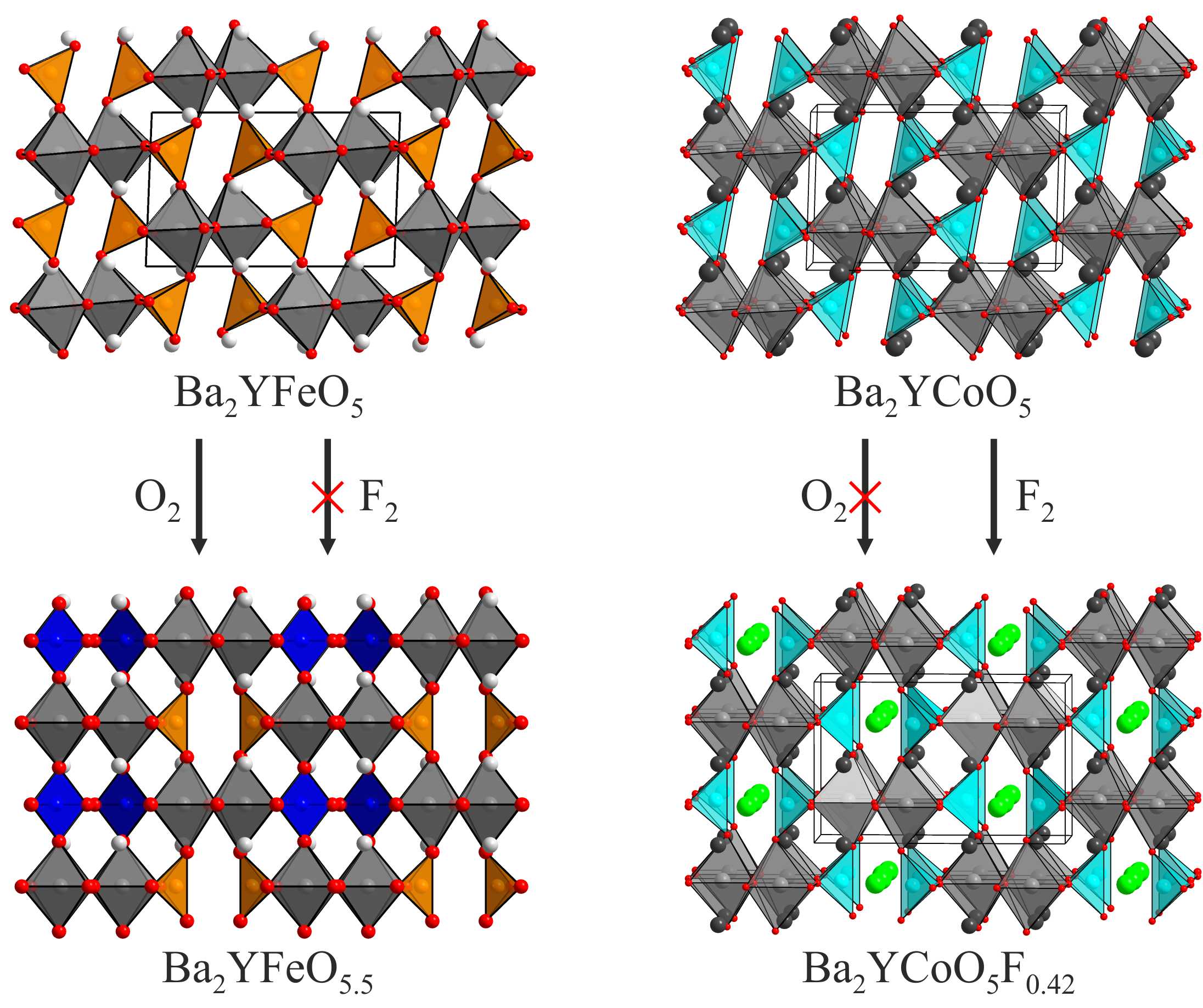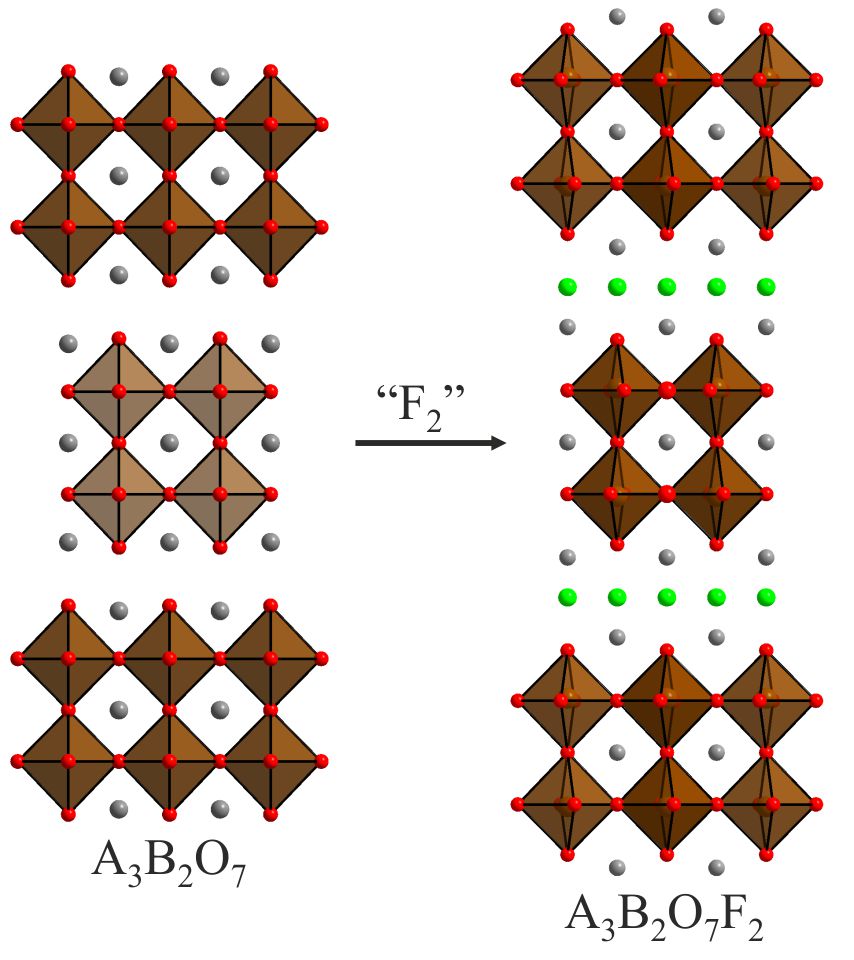
 |
| Home | Research | Publications | People | Joining the Group | Teaching |
|
Anion insertion reactions allow the topochemical oxidation of extended transition metal oxide phases. A key requirement of this type of reaction is that the host lattice contains an oxidizable cation an a suitable location to accommodate the inserted anions. Given the similar ionic radii of O2- and F- both fluoride and oxide ions can be readily inserted into complex oxide lattices. |
|
Anion insertion into cation-ordered perovskite phases Cation-ordered anion-vacancy ordered perovskite phases (see are work in this area here) naturally contain sites suitable for the accommodation of oxidatively intercalated anions, and can show remarkable selectivity in the reactivity towards inserted anions. For example the two isostructural phases Ba2YFeO5 and Ba2YCoO5 exhibit strikingly different reactivity to oxygen and fluorine – Ba2YFeO5 intercalates oxygen and not fluorine, while Ba2YCoO5 intercalates fluorine and not oxygen. The oxidation of Ba2YFeO5 breaks the inversion symmetry of the host lattice and as a result Ba2YFeO5.5 exhibits both pyroelectric and ferromagnetic behaviour, and demonstrates that topochemical oxidation reactions offer a novel route to the preparation of multiferroic materials. Inorganic Chemistry, 51 (2012) 12281. |
 |
 |
Anion insertion into Ruddlesden-Popper structured oxides Extended oxide phases with An+1BnO3n+1 Ruddlesden-Popper type structures contain ‘empty’ anion intercalation sites within the ‘rock salt’ layers of their frameworks. Under the correct conditions, additional anions can be inserted into these coordination sites leading to a net oxidation of the phase. An interesting feature of this type of anion insertion is that the inserted anions are not located within the primary coordination sphere of the metal cations which are oxidized. This process can therefore be considered to be an ‘electronic only’ type oxidation. By applying this approach to Sr3MRuO7 (M = Ti, Mn, Fe) Ruddlesden-Popper phases we have prepared the analogous oxidized materials. In case of the manganese and titanium phases a simple oxidation reaction occurs to form Sr3MRuO7F2 (M = Ti, Mn) in which fluorine is inserted into materials in a simple topochemical oxidation reaction to form Ru6+ phases. In contrast fluorination of Sr3FeRuO7 results in Sr3FeRuO5.5F3.5 a phase which contains Fe3+ and Ru5.5+ and in which in addition to anion insertion, some oxide-for-fluoride anion exchange has also occurred. Inorganic Chemistry, 52 (2013) 3388. |